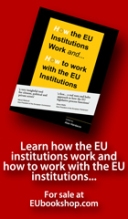Not many people – if any – fully understand all the complications connected to a structured synthetic collateralized debt obligations. That’s what they call the loans Goldman Sachs have been trading and hiding the true value of the assets for the investors. At the moment it’s not known who’s been involved in the deals. This case has the potential to make Lehman Brothers look like a bunch of amateurs.
“The fabulous Fabrice Tourre is standing in the middle of all of these complex, highly leveraged, exotic trades he created without necessarily understanding all of the implications of those monstrosities.”
Fabrice Tourre
The Securities and Exchange Commission has charged Goldman Sachs and one of its vice presidents, Fabrice Tourre, for defrauding investors by misstating and omitting key facts about a synthetic CDO backed by subprime mortgages. Tourre is seen as the mastermind behind the complex financial instruments that not even himself fully understood.
The SEC alleges that Goldman Sachs structured and marketed the synthetic CDO, the performance of which was based on subprime RMBS. The bank failed to disclose to investors vital information regarding the said CDO, specifically the role that a major hedge fund played in the portfolio selection process as well as the fact that the hedge fund had taken a short position against the CDO.
“The SEC continues to investigate the practices of investment banks and others involved in the securitization of complex financial products tied to the U.S. housing market as it was beginning to show signs of distress,” says Kenneth Lench, chief of the SEC’s structured and new products unit.
According to the SEC’s complaint, filed in the U.S. District Court for the Southern District of New York, the marketing materials for the CDO known as ABACUS 2007-AC1 all represented that the RMBS portfolio underlying the CDO was selected by ACA Management (ACA), which is a third party that is an expert in analyzing RMBS credit risk.
The SEC alleged that undisclosed in the marketing materials and without investors’ knowledge, Paulson & Co., which was poised to benefit if the RMBS defaulted, played a significant role in selecting which RMBS should make up the portfolio.
The SEC’s complaint alleges that after participating in the portfolio selection, Paulson & Co. effectively shorted the RMBS portfolio it helped select by entering into credit default swaps (CDS) with Goldman Sachs to buy protection on specific layers of the ABACUS capital structure. Given that financial short interest, Paulson & Co. had an economic incentive to select RMBS that it expected to experience credit events in the near future.
The SEC alleged that one of the world’s largest hedge funds, Paulson & Co., paid Goldman Sachs to structure a transaction in which the fund could take short positions against RMBS chosen by Paulson based on a belief that the securities would experience credit events.
Goldman Sachs did not disclose Paulson & Co.’s short position or its role in the collateral selection process in the term sheet, flip book, offering memorandum, or other marketing materials given to investors.
The SEC alleged that Goldman Sachs Vice President Fabrice Tourre was mostly responsible for ABACUS 2007-AC1. Tourre structured the transaction, prepared the marketing materials, as well as communicated directly with investors.
Tourre allegedly knew of Paulson & Co.’s undisclosed short interest and role in the collateral selection process. Additionally, he supposedly misled ACA into believing that Paulson invested roughly $200 million in ABACUS’ equity, indicating that Paulson’s interests in the collateral selection process were closely aligned with ACA’s interests. However, their interests were actually sharply conflicting.
Investors in the liabilities of ABACUS are alleged to have lost more than $1 billion.
The Fabulous Fab
Tourre, age 31, is currently based in London works for Goldman as an executive director. When the Abacus CDO was created, he was based in New York City and was a vice president on the firm’s structured product correlation trading desk.
In an email sent out in January 2007, Tourre wrote to a friend “more and more leverage in the system, the whole building is about to collapse anytime now … only potential survivor, the fabulous Fab … standing in the middle of all of these complex, highly leveraged, exotic trades he created without necessarily understanding all of the implications of those monstrosities!!!”
The Fabulous ABACUS 2007-AC1
The CDO at the center of the fraud case against Goldman Sachs is known as ABACUS 2007-AC1, and a class of its debt was cut to ‘D’ from ‘CCC-‘ by Standard Poor’s in May 2009.
That cut to ‘D’ might have been the most recent rating action taken on this specific transaction. ASR sister publication Investment Dealers Digest obtained a copy of the downgrade report on Friday.
In that report, which was published on May 13, 2009, S&P said the downgrade of the transaction’s Class A-1 “follows a number of recent write-downs of underlying entities that caused the class A-1 notes to incur a partial principal loss.”
In February 2009, S&P cut the deal’s Class A-2 to ‘D’ from ‘CCC-‘ after write-downs of reference entities in the underlying collateral pool which caused the A-2 note to incur a partial principal loss.
Fitch Ratings, meanwhile, said it did not rate that specific deal, and Moody’s Investors Service did not respond immediately to questions from IDD about the transaction.
The Securities And Exchange Commission (SEC) charged Goldman with fraud when it sold a CDO whose value hinged on the performance of subprime MBS.
According to regulators, Goldman structured and marketed the synthetic CDO without disclosing to investors that a major hedge fund played a role in the portfolio selection process and the fact that the hedge fund had taken a short position against the CDO.
ABACUS 2007-AC1 closed on April 26, 2007. By October 2007, 83% of the RMBS debt in the portfolio had been downgraded and 17% was on negative watch, according to the SEC.
By January 2008, 99% of the portfolio had been downgraded.
The Fabulous Loan Scheme
Arch Bay Capital, an active buyer and seller of nonperforming mortgages, is on the verge of jumping into the origination market and is busily gathering lending licenses in several states, according to officials briefed on its plans.
A nonbank based in Southern California, Arch Bay made news last year when it bought $600 million in nonperforming loans from Wells Fargo. It also recently issued a bond backed by NPLs.
A company official confirmed to National Mortgage News that Arch Bay is working on something tied to originations but would not comment further.
The firm, though, has created a Web site for a unit called Arch Bay Mortgage that said, “Coming Soon.”
Industry sources said some of Arch Bay’s financing comes from a special fund controlled by partners at Goldman Sachs.
One lender in the Southern California market said he has heard of Arch Bay’s plans, but questioned its timing.
“They’re getting in at a time when fundings are shrinking,” he says.
The party is just getting started….
Source: Structured Finance News
Related by the Econotwist:
Goldman Sachs Charged With Fraud – Here’s The SEC filing
Goldman Sachs: “Damn American Bastards!”
AIG: What Did FED Bail Out and Why?
EU Wants Answers From Wall St. On Greek Debt
The Bailout Package Under The Christmas Tree
*
The H5F-TV Toolbar; built-in radio- and TV channels, news ticker and email notifier.
*
Related articles by Zemanta
- Goldman Sachs, Fabrice Tourre and the complex Abacus of toxic mortgages (telegraph.co.uk)
- Goldman Sachs SEC Charges: Translated for Humans (blogs.wsj.com)
- The SEC says John Paulson won’t be next (money.cnn.com)
- SEC Accuses Goldman Sachs of Hypocrisy in Civil Suit (abovethelaw.com)
- SEC v. Goldman: ACA’s Tale of Woe (blogs.wsj.com)
- SEC Probe Highlights Risky Wall Street Dealmaking (abcnews.go.com)
- Fabrice Tourre, Goldman Sachs VP, Charged With Securities Fraud (huffingtonpost.com)
- Inside the SEC’s Legal Case Against Goldman Sachs (dailyfinance.com)































Pingback: Fabrice Tourre: The Last (Gold)Man Standing | EconoTwist's
Pingback: Former Goldman Sachs Banker Become New ECB President | EconoTwist's
Sharing good health to your hands. More wait ..